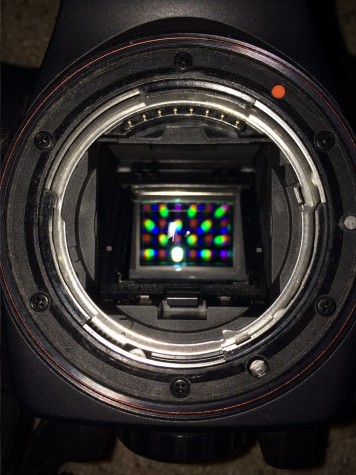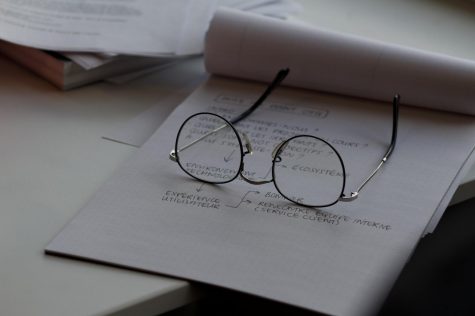The (Basic) Science behind Photography
For all of us, life moves fast. So much of it in our years is forgotten, and for a great portion of us, the most efficient and effective way to remember any moment of significance is by taking a photograph. Typically, the pictures in those moments will be taken among many more of the same—resulting in a trove of identical photos of a nephew’s party or a best friend’s engagement. And, while the photos are being delivered and the memories are being securely saved, little thought will be given to the process of how the phone or physical camera brought that to life.
For photographers, the process is crucial, but often overlooked. I’ve been taking photographs for five years, and in this article, I’ll attempt to explain the much underestimated development.
If you’re a newcomer to photography, take a look at the list of photography-related words below before we begin. They may prove useful as we approach this subject.
Photography: the art or practice of taking and processing photographs
Photograph: a picture made using a camera, in which an image is focused onto film or other light-sensitive material and then made visible and permanent by chemical treatment, or stored digitally
Lens: a piece of glass or other transparent substance with curved sides for concentrating or dispersing light rays; used to focus the light of a scene for the purpose of taking a photograph
Film: a thin flexible strip of plastic or other material coated with light-sensitive emulsion for exposure in a camera
Exposure Time: the amount of time the film or camera sensor is exposed to light
Exposure: a single cycle of the shutter, or one photograph
Shutter Release: a push-button that activates the taking of a picture by opening shutter and exposing the film or sensor
Negative: an image on a photographic film that shows dark areas as light and light areas as dark, from which the final picture is printed
Image Sensor: a device that converts an optical image to an electric signal
Photon: a particle representing a quantum of light or other electromagnetic radiation
Autofocusing System: a control system and a motor or tunable optical element to focus automatically or on a manually selected point or area
Here we go!
Film Photography:
Cameras have not always been around. In the scheme of things, photography is a rather new form of art. To understand how a modern camera works, we must first learn how they worked at their conception.
Film photography was first invented in the early 1800’s. Back then, the process to obtain an exposure was long (sometimes taking multiple days) and often unsuccessful due to unreliable and unstable films, which makes sense as it was such a new art at this time. After many years of evolution in the technological field of film and camera equipment, the film camera reached the level of performance that we know today. In its simplest form, the film camera works as follows:
1. A metal box with a spring-loaded mirror that reflects the scene into the photographer’s eye is attached to a glass lens used for focusing.
2. A light-sensitive piece of piece of plastic, called film, coated in ultra thin gelatin and microscopic silver halide crystals (the component that makes film sensitive to light) is loaded into the camera.
3. The photographer sets up the chosen exposure time, the amount of time—notated in fractions of a second—that light is allowed to strike the film, and ensures the image will be clear and defined by focusing the lens (the glass “eye” of the camera).
4. The photographer presses the shutter release, which moves the mirror out of the way, and exposes the film to the light of the captured scene and permanently burns the negative (the exact opposite of a captured scene, present in order to preserve the captured image with chemicals in the film) of that image onto the film.
The process of film-based photography, though still appreciated in masses today, has met a prominent competitor as of the mid-1970s: Digital—in which the camera acts more so as a computer, storing, capturing and manipulating the photos electronically.
Digital Photography:
Much like film photography, a photographer chooses the settings they want to use to capture an image with their camera, focuses (done automatically by their camera’s autofocusing system) and presses the shutter release (the button that tells the camera to open the shutter and take a picture). The most notable difference between digital and film photography is that, in the prior, no film is involved.

Instead of a light-sensitive strip of film, digital cameras contain an image sensor being exposed to light. In simplest mechanics, the image sensor collects millions of different colored photons (the smallest form of light energy) in microscopic troughs located on the surface of the image sensor. Once the camera shutter closes again, the camera converts the captured photons into numerical information based off of the voltage they create when hitting the sensor—which is dependent on the specific brightness and color of the photon. The digital camera compiles this information and voila! you have a digital photograph.
Once you are at this part of the process, the opportunities are limitless. The ability to take as many photos as desired and view them almost instantaneously is spectacular and was unimaginable when photography was born. Computer and camera technology have come so far, giving users the ability to take, edit and share pictures with reckless abandon (but hopefully not too reckless). So get out there and put your new knowledge to use!
EDITOR’S NOTE: On Nov. 18, we flipped the photo of a digital sensor and added a caption. That’s all!






